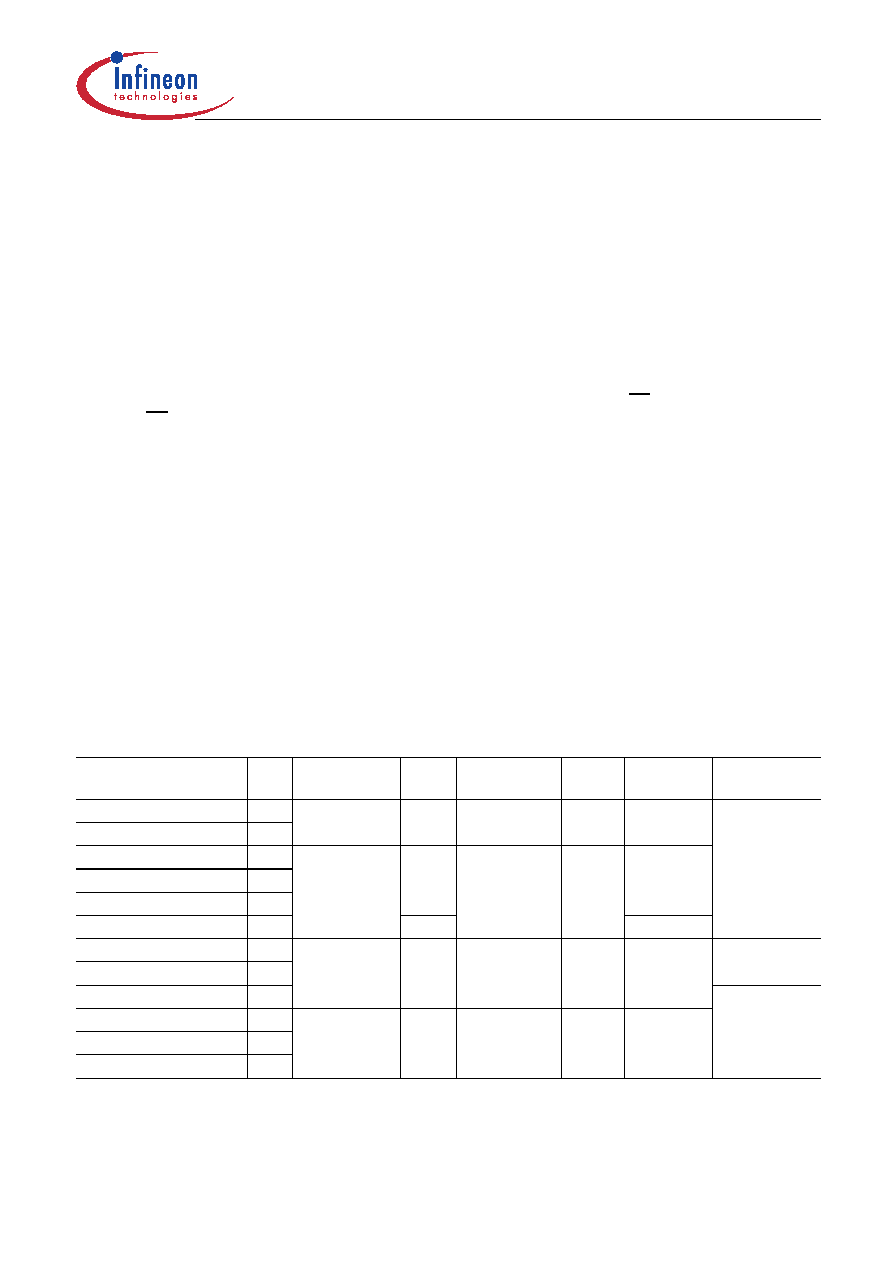- 您現(xiàn)在的位置:買賣IC網(wǎng) > PDF目錄296198 > HYB25D256160CC-5 (INFINEON TECHNOLOGIES AG) 256 Mbit Double Data Rate SDRAM PDF資料下載
參數(shù)資料
| 型號(hào): | HYB25D256160CC-5 |
| 廠商: | INFINEON TECHNOLOGIES AG |
| 英文描述: | 256 Mbit Double Data Rate SDRAM |
| 中文描述: | 256兆雙倍數(shù)據(jù)速率SDRAM |
| 文件頁(yè)數(shù): | 2/94頁(yè) |
| 文件大小: | 3326K |
| 代理商: | HYB25D256160CC-5 |
第1頁(yè)當(dāng)前第2頁(yè)第3頁(yè)第4頁(yè)第5頁(yè)第6頁(yè)第7頁(yè)第8頁(yè)第9頁(yè)第10頁(yè)第11頁(yè)第12頁(yè)第13頁(yè)第14頁(yè)第15頁(yè)第16頁(yè)第17頁(yè)第18頁(yè)第19頁(yè)第20頁(yè)第21頁(yè)第22頁(yè)第23頁(yè)第24頁(yè)第25頁(yè)第26頁(yè)第27頁(yè)第28頁(yè)第29頁(yè)第30頁(yè)第31頁(yè)第32頁(yè)第33頁(yè)第34頁(yè)第35頁(yè)第36頁(yè)第37頁(yè)第38頁(yè)第39頁(yè)第40頁(yè)第41頁(yè)第42頁(yè)第43頁(yè)第44頁(yè)第45頁(yè)第46頁(yè)第47頁(yè)第48頁(yè)第49頁(yè)第50頁(yè)第51頁(yè)第52頁(yè)第53頁(yè)第54頁(yè)第55頁(yè)第56頁(yè)第57頁(yè)第58頁(yè)第59頁(yè)第60頁(yè)第61頁(yè)第62頁(yè)第63頁(yè)第64頁(yè)第65頁(yè)第66頁(yè)第67頁(yè)第68頁(yè)第69頁(yè)第70頁(yè)第71頁(yè)第72頁(yè)第73頁(yè)第74頁(yè)第75頁(yè)第76頁(yè)第77頁(yè)第78頁(yè)第79頁(yè)第80頁(yè)第81頁(yè)第82頁(yè)第83頁(yè)第84頁(yè)第85頁(yè)第86頁(yè)第87頁(yè)第88頁(yè)第89頁(yè)第90頁(yè)第91頁(yè)第92頁(yè)第93頁(yè)第94頁(yè)

HYB25D256[16/40/80]0C[E/C/F/T](L)
256 Mbit Double-Data-Rate SDRAM
Overview
Data Sheet
10
Rev. 1.6, 2004-12
1.2
Description
The 256 Mbit Double-Data-Rate SDRAM is a high-speed CMOS, dynamic random-access memory containing
268,435,456 bits. It is internally configured as a quad-bank DRAM.
The 256 Mbit Double-Data-Rate SDRAM uses a double-data-rate architecture to achieve high-speed operation.
The double data rate architecture is essentially a 2n prefetch architecture with an interface designed to transfer
two data words per clock cycle at the I/O pins. A single read or write access for the
256 Mbit Double-Data-Rate SDRAM effectively consists of a single 2n-bit wide, one clock cycle data transfer at
the internal DRAM core and two corresponding n-bit wide, one-half-clock-cycle data transfers at the I/O pins.
A bidirectional data strobe (DQS) is transmitted externally, along with data, for use in data capture at the receiver.
DQS is a strobe transmitted by the DDR SDRAM during Reads and by the memory controller during Writes. DQS
is edge-aligned with data for Reads and center-aligned with data for Writes.
The 256 Mbit Double-Data-Rate SDRAM operates from a differential clock (CK and CK; the crossing of CK going
HIGH and CK going LOW is referred to as the positive edge of CK). Commands (address and control signals) are
registered at every positive edge of CK. Input data is registered on both edges of DQS, and output data is
referenced to both edges of DQS, as well as to both edges of CK.Read and write accesses to the DDR SDRAM
are burst oriented; accesses start at a selected location and continue for a programmed number of locations in a
programmed sequence. Accesses begin with the registration of an Active command, which is then followed by a
Read or Write command. The address bits registered coincident with the Active command are used to select the
bank and row to be accessed. The address bits registered coincident with the Read or Write command are used
to select the bank and the starting column location for the burst access.
The DDR SDRAM provides for programmable Read or Write burst lengths of 2, 4 or 8 locations. An Auto
Precharge function may be enabled to provide a self-timed row precharge that is initiated at the end of the burst
access. As with standard SDRAMs, the pipelined, multibank architecture of DDR SDRAMs allows for concurrent
operation, thereby providing high effective bandwidth by hiding row precharge and activation time.
An auto refresh mode is provided along with a power-saving power-down mode. All inputs are compatible with the
JEDEC Standard for SSTL_2. All outputs are SSTL_2, Class II compatible.
Note: The functionality described and the timing specifications included in this data sheet are for the DLL Enabled
mode of operation.
Table 2
Ordering Information for Lead Containing Products
Product Type2)
Org. CAS-RCD-RP
Latencies
Clock
(MHz)
CAS-RCD-RP
Latencies
Clock
(MHz)
Speed
Package
HYB25D256800CT–5
×8
3-3-3
200
2.5-3-3
166
DDR400B
P-TSOPII-66
HYB25D256160CT–5
×16
HYB25D256800CT–6
×8
2.5-3-3
166
2-3-3
133
DDR333
HYB25D256800CT(L)–6
×8
HYB25D256160CT–6
×16
HYB25D256400CT–7
×4
143
DDR266A
HYB25D256400CC–5
×4
3-3-3
200
2.5-3-3
166
DDR400B
P-TFBGA-60
HYB25D256800CC–5
×8
HYB25D256160CC–5
×16
HYB25D256400CC–6
×4
2.5-3-3
166
2-3-3
133
DDR333
HYB25D256800CC–6
×8
HYB25D256160CC–6
×16
相關(guān)PDF資料 |
PDF描述 |
|---|---|
| HYB25S256160AC-7.5 | 16M X 16 SYNCHRONOUS DRAM, 7.5 ns, PBGA54 |
| HYB39S128160TEL-37 | MEMORY SPECTRUM |
| HYB39S128160TEL-5 | MEMORY SPECTRUM |
| HYB39S128160TEL-7 | MEMORY SPECTRUM |
| HYB39S128160TEL-75 | MEMORY SPECTRUM |
相關(guān)代理商/技術(shù)參數(shù) |
參數(shù)描述 |
|---|---|
| HYB25D256160CC-6 | 制造商:INFINEON 制造商全稱:Infineon Technologies AG 功能描述:256 Mbit Double Data Rate SDRAM |
| HYB25D256160CE-5 | 制造商:QIMONDA 制造商全稱:QIMONDA 功能描述:256-Mbit Double-Data-Rate SDRAM |
| HYB25D256160CE-5A | 制造商:QIMONDA 制造商全稱:QIMONDA 功能描述:256-Mbit Double-Data-Rate SDRAM |
| HYB25D256160CE-6 | 制造商:QIMONDA 制造商全稱:QIMONDA 功能描述:256-Mbit Double-Data-Rate SDRAM |
| HYB25D256160CEL-6 | 制造商:QIMONDA 制造商全稱:QIMONDA 功能描述:256-Mbit Double-Data-Rate SDRAM |
發(fā)布緊急采購(gòu),3分鐘左右您將得到回復(fù)。